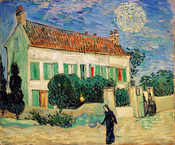Review of the chapter concerning getting old. Covers the historical periods views and treatment of old age. Has continuities and discontinuities with other historical periods, also what did I learn from it.
Getting old is not a socially accepted occurrence. In America, contempt and disrespect are the result of someone's aging. Therefore, people look upon the elderly as broken down, slow, incapable, and virtually worthless human beings. The idea of aging, the negative perspective associated with getting old, is apparent in every society. The roots of this are likely coming from the past decades when old age was linked to weakness. Society has successfully carried on this tradition of discrimination by forcibly pushing the elderly out of the workforce. As the past has moved toward modernization, it has varied traditional practices in society. Younger generations are less likely to adapt to the idea of respect and admiration toward the elderly, resulting in the elderly to recognize how their generation is slowly being pushed out.
Modernization brought about new factories with new machines. The elder workers were not as strong and could no longer keep up with these new machines. The result being more elders being booted out, and younger generations welcomed in. The older generation struggled to hang on to their positions in the workforce and society, while the needs for stronger, younger, and healthier persons were continuously pushing the elders away. In return, elders were left finding jobs that required less on their part and produced low wages for them.
The artwork in Chapter 6 expresses how the elderly were put out as time past over the years. At first, the old were depicted as working and looking as if they were pleases with their lives. An example here is Vincent Van Gogh's weaver beside...


